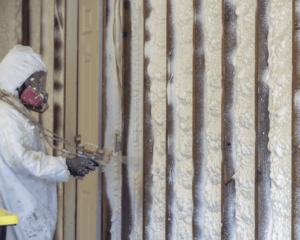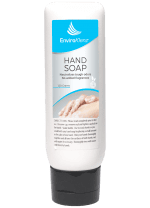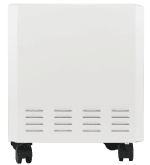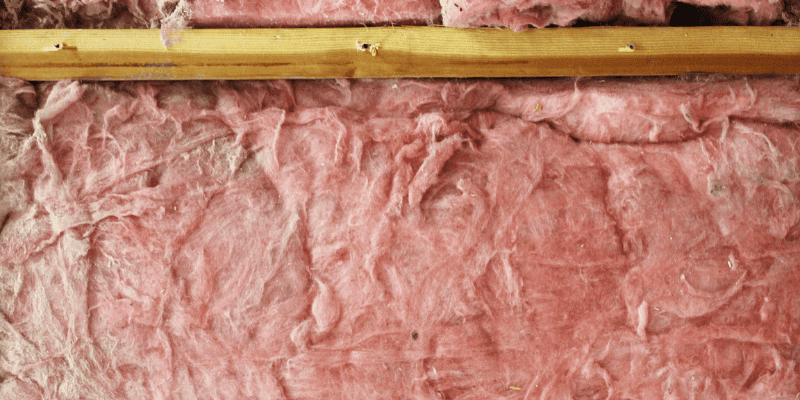The Alternatives to Spray Foam Insultation
Having the proper insulation inside of your home is a crucial aspect to any green building due to its ability to reduce energy use, making the building a more ecological structure. When it comes to accomplishing a proper insulation within the building of this indoor environment, builders will use what is called spray foam insulation to place within certain areas of a home in an effort to trap air flow and maintain an insulated space for the building structure. Over the years spray polyurethane foam has been proven to be an effective insulating material, and thus its rising popularity for use in many home’s today. However, is polyurethane spray foam a safe option for your home, or is it a potentially toxic building material that could be compromising your indoor air quality?
Spray polyurethane foam is a powerful insulation material that is known to tightly restrict air flow and remains the only closed-cell insulation material that FEMA approves for flood resistant insulation. Although the strength and durability of spray foam insulation is what drives the use of this insulation material, spray foam is not the most substantial option – largely in part to its toxic chemical make-up that can ultimately end up impacting an indoor environment like a home after it is installed.
In this article we are going to learn more about the pros and cons of using spray foam insulation and discuss the best alternatives to use instead of spray foam insulation, in a home.
Polyurethane Spray Foam Insulation Odor
 When polyurethane spray foam insulation is used in a home, immediately following its installation there may be a strong, overwhelming chemical odor that will fill through the confined space of your home. This chemical odor is caused by the chemical make-up of the polyurethane spray foam insulation, which utilizes known toxic chemicals as key ingredients in this building material. The spray foam, if installed correctly, should only emit relatively low fume levels into the air space of the home after its installation, however, the severity of the polyurethane spray foam insulation odor can depend on several factors within this environment.
When polyurethane spray foam insulation is used in a home, immediately following its installation there may be a strong, overwhelming chemical odor that will fill through the confined space of your home. This chemical odor is caused by the chemical make-up of the polyurethane spray foam insulation, which utilizes known toxic chemicals as key ingredients in this building material. The spray foam, if installed correctly, should only emit relatively low fume levels into the air space of the home after its installation, however, the severity of the polyurethane spray foam insulation odor can depend on several factors within this environment.
According to the EPA, the ingredients used to form spray foam insulation contains two sides, Side A and Side B (50/50%). This chemical mixture will leave the gun, nozzle, and straw and form a foam as the chemical reaction occurs. The chemical reaction forms heat through an exothermic reaction that allows for the foam to begin expanding upon its initial release onto the surface(s). As the spray foam begins to expand it will start to release (also known as off gas) the different chemicals found in the spray foam into the air space of the environment in which it was applied into – whether that be a whole home, room, or office building. The chemical off gassing of the polyurethane spray foam is the root cause of the strong odor that will be harbored in the environment after the use of this building material and is the dependent variable that will affect after the application of spray foam insulation how long to stay out of the house while the chemical odor off gasses.
Spray Foam Insulation Moisture Problems
Moisture is a big issue for many indoor building structures and is among one of the most damaging issues that could happen in this indoor space. This water intrusion inside of a home or other personal indoor environment can be an instigator to several issues in the space including compromising the building performance, the health of the occupants in this environment, and the overall durability of the impacted structure surfaces. Typically, most moisture-related problems are caused by air leakage, vapor diffusion, and large water usage/transfers in the environment.
It has commonly been said that insulating a home’s roof line with spray foam insulation can lead to moisture problems with the roof sheathing, however, this is simply a myth. Spray foam insulation is considered to be an air impermeable insulation material and thus it will act as a barrier to protect the structure from potential moisture intrusions that may enter into your home.
Natural Alternatives to Spray Foam Insulation
 When it comes to selecting an insulation material for your home, there are several other natural alternatives to spray foam insulation, which as we have learned may not be the safest insulation material that you could use in your home. The application of insulation material like spray foam in a home is something that can impact various functions in your home, along with the potential to taint the indoor air quality of this confined space. Thus, if you find a safe, natural option for insulation inside your home you could help to promote a cleaner living space with fewer toxins.
When it comes to selecting an insulation material for your home, there are several other natural alternatives to spray foam insulation, which as we have learned may not be the safest insulation material that you could use in your home. The application of insulation material like spray foam in a home is something that can impact various functions in your home, along with the potential to taint the indoor air quality of this confined space. Thus, if you find a safe, natural option for insulation inside your home you could help to promote a cleaner living space with fewer toxins.
Instead of using spray foam some builders that are looking to make greener buildings are using alternatives like cotton denim and cellulose insulation. Cotton denim insulation is made from industrial scraps in the textile industry, using the leftover clothes from retailers to recycle it into insulation. In addition, cellulose insulation is also made using recycled waste, specifically from hammer milling newspaper waste. Both of these options are natural alternatives to the use of spray foam insulation inside of a home.
How to Remove Spray Foam from Hands & Air Space
 The use of spray foam inside of your home, especially when you are the one that installed it, can spread throughout the environment and even taint your hands with its strong chemical odor. When you apply spray foam insulation, it is recommended that you wear protective equipment to ensure that your skin is not coming into contact with this chemical polyurethane spray foam. However, accidents can occur and in some cases the spray foam might find its way onto your hands and stanching them with its strong chemical odor. What can be done to help remove the spray foam odor from your hands? A powerful, yet effective solution used to remove strong chemical odors from hands is called the EnviroKlenz Hand Soap. This soap utilizes a proprietary earth mineral technology that effective contains and neutralizes chemicals and odors from the surface of your hands without the use of other chemicals or masking agents in its composition. Thus, the EnviroKlenz Hand Soap is a great solution to a stinky, chemical odor problem on your skin.
The use of spray foam inside of your home, especially when you are the one that installed it, can spread throughout the environment and even taint your hands with its strong chemical odor. When you apply spray foam insulation, it is recommended that you wear protective equipment to ensure that your skin is not coming into contact with this chemical polyurethane spray foam. However, accidents can occur and in some cases the spray foam might find its way onto your hands and stanching them with its strong chemical odor. What can be done to help remove the spray foam odor from your hands? A powerful, yet effective solution used to remove strong chemical odors from hands is called the EnviroKlenz Hand Soap. This soap utilizes a proprietary earth mineral technology that effective contains and neutralizes chemicals and odors from the surface of your hands without the use of other chemicals or masking agents in its composition. Thus, the EnviroKlenz Hand Soap is a great solution to a stinky, chemical odor problem on your skin.
 In addition, EnviroKlenz also offers air quality solutions to help mitigate those pesky unwanted odors and pollutants from the indoor air space of an environment. The EnviroKlenz Air Purifier uses the same, proprietary earth mineral technology to capture, contain, and neutralize airborne pollutants and chemical odors from the air, like polyurethane spray foam insulation chemicals. Also, within this air purifier is a hospital-grade HEPA filter for fine particulate matter removal as small as 0.3 microns in size at a 99.99 percent efficiency. Ultimately, this air purifier will help to steadily speed up the off gassing of spray foam insulation in your home and aid to maintain a safe, clean air space in your home.
In addition, EnviroKlenz also offers air quality solutions to help mitigate those pesky unwanted odors and pollutants from the indoor air space of an environment. The EnviroKlenz Air Purifier uses the same, proprietary earth mineral technology to capture, contain, and neutralize airborne pollutants and chemical odors from the air, like polyurethane spray foam insulation chemicals. Also, within this air purifier is a hospital-grade HEPA filter for fine particulate matter removal as small as 0.3 microns in size at a 99.99 percent efficiency. Ultimately, this air purifier will help to steadily speed up the off gassing of spray foam insulation in your home and aid to maintain a safe, clean air space in your home.
Mobile Air System
✓ Patented earth mineral technology works to attack VOCs and break them down on a compound level
✓ No chemicals or masking agents
✓ Will not release any chemicals back into your environment
✓ Safer and faster at removing VOC’s than traditional carbon filters and PECO air purifiers








